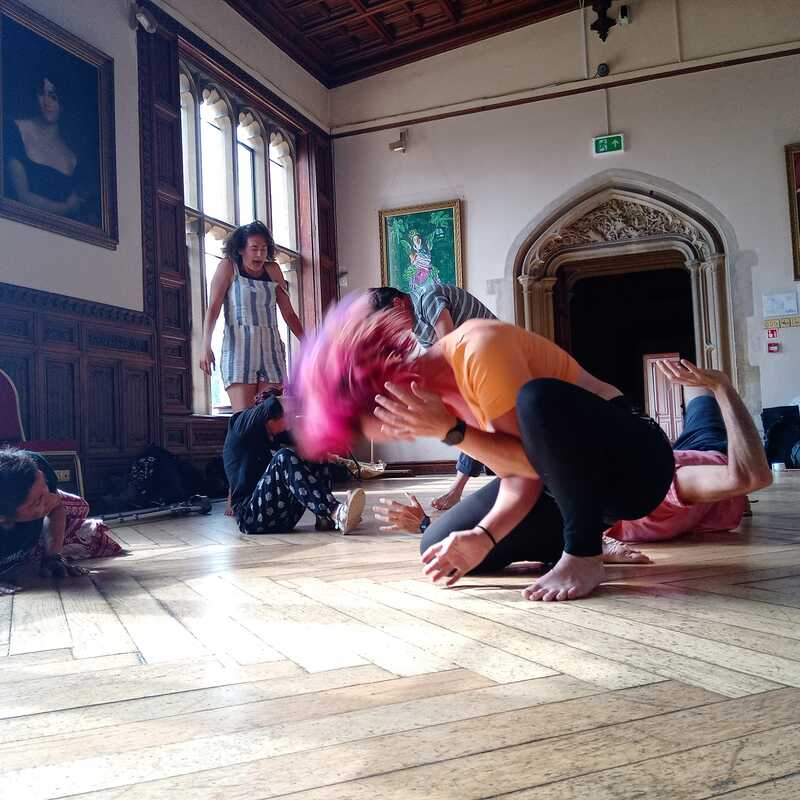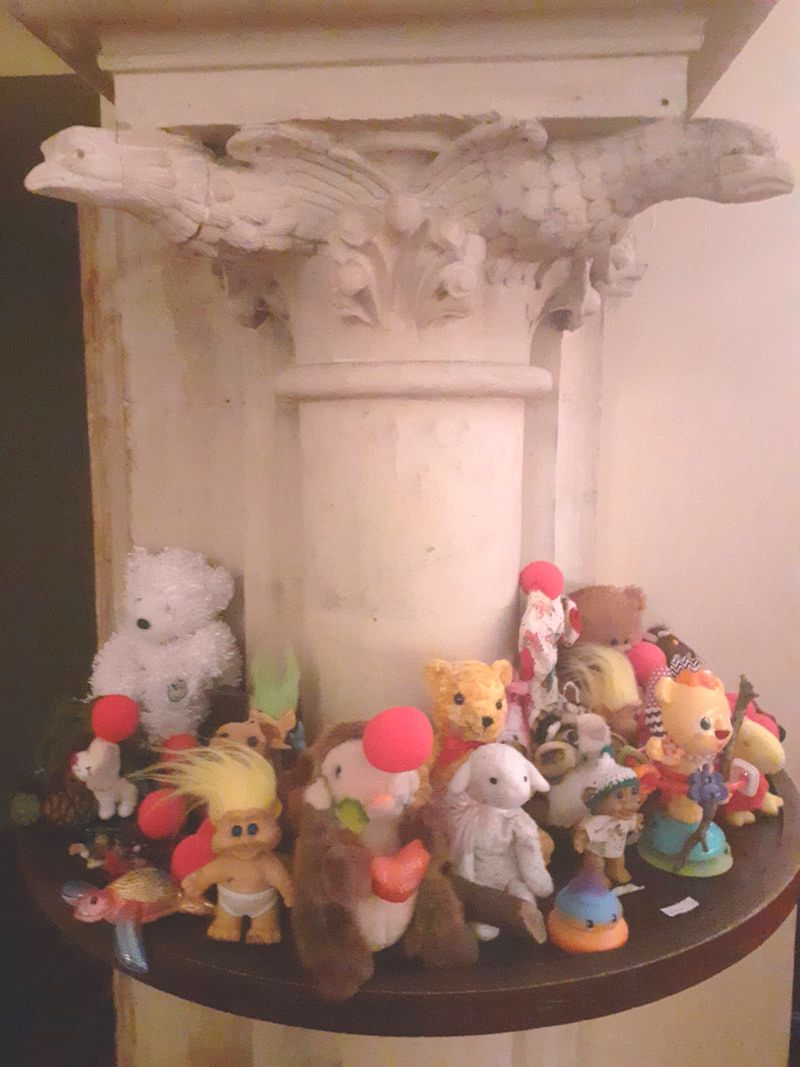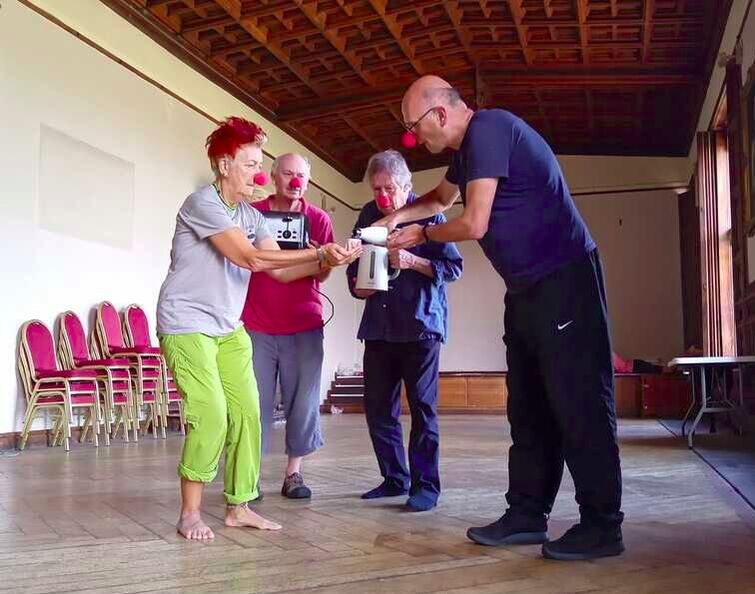Day 3: Clowns, Climate & Planet
by Robyn Hambrook
The day helped settle my thinking into ways and territories that clown and clowning can work in in these times of climate crisis:
On the third day our focus expanded
beyond systemic influences to incorporate the whole planet. And from
here we came back into ourselves. Prior to the day I had been thinking
about how disconnected and disassociated we can feel to the climate
crisis so perhaps we need to first locate the climate crisis within
ourselves.
I introduced the day and began the first session exploring a workshop I had been developing bringing together clowning with one of my movement practices, Butoh. Butoh is a protest dance form that developed in Japan after the 2nd World War, as the country faced a cultural identity and emotional crises that left a paralysing scar on the national consciousness. Dance artists reacted to the horrors that had been witnessed by portraying them through the body with grotesque and playful results. I had been playing with Butoh as a way for us to connect to the complex feelings I had been feeling in relation to the Climate Crisis. The process was to create choreographic scores using evocative images of climate collapse or capitalism for instance. Once those were set we performed them as clowns. During the process we started to research further by adding a nose, adding music, playing the nose and/or connecting with audience. The varied results raised a lot of reflection and critique. As an audience, do the images connect more or less with each element? Are we seeming to mock these serious issues? Does adding the clown bring lightness where we don’t want it or feel we deserve it?
I introduced the day and began the first session exploring a workshop I had been developing bringing together clowning with one of my movement practices, Butoh. Butoh is a protest dance form that developed in Japan after the 2nd World War, as the country faced a cultural identity and emotional crises that left a paralysing scar on the national consciousness. Dance artists reacted to the horrors that had been witnessed by portraying them through the body with grotesque and playful results. I had been playing with Butoh as a way for us to connect to the complex feelings I had been feeling in relation to the Climate Crisis. The process was to create choreographic scores using evocative images of climate collapse or capitalism for instance. Once those were set we performed them as clowns. During the process we started to research further by adding a nose, adding music, playing the nose and/or connecting with audience. The varied results raised a lot of reflection and critique. As an audience, do the images connect more or less with each element? Are we seeming to mock these serious issues? Does adding the clown bring lightness where we don’t want it or feel we deserve it?
The second workshop was a collaboration between Saskia Kraftowitz and Pan. The session was prefaced with an introduction to grief
work from Pan and a discussion about the importance of these processes
in relation to moving beyond climate anxiety and into action. The
session continued with a writing exercise to explore our areas of numbness, anger, rage, despair. Then Saskia led their ‘Giggling with Grief’ workshop, drawing on grief tending, voice and clowning practices and the idea that the expression of laughter and crying are closely connected. We were invited to choose a mascot from an enormous pile of soft toys Saskia had
brought, and invited us to take our new friend outdoors, into nature to
explore and share our grief. The process ended by sharing our
experiences with a partner and creating a shrine out of our friends and clown noses, leaving our grief with them.
After
lunch an open space session asked how we might practically use clowning
to address the climate crisis. We split into a five practical
exploratory sessions; ‘Laughing with nature’, ‘Guilt: the Musical’,
playing with extreme emotions, switching emotions and the space in
between; the power of expressing no emotion and how it creates abstract
meaning – drawing on the experiences of the Red Brigade; and a clown
theatre piece very simply and playfully exploring inequality of
resources.
The
day ended with a session from Franki talking about changing our
stories. To explore the narratives we tell ourselves. We chose a story
from our past, a trauma the had had a lasting effect on us. We then
danced with our stories from different points of view; as the victim (a
tragedy), as the hero, ironically and finally (although time ran out and
we didn’t quite get there) comedically, when we realise all our stories
are universal.The day helped settle my thinking into ways and territories that clown and clowning can work in in these times of climate crisis:
- Clowning in theatre or theatre in education
- Therapeutically to process grief and complex emotions – butoh clown & grief-tending work
- Finding new way’s forward – clown logic, imagination, play
- Energetically – clown ritual and psychomagic to infuse meaning and intention





Comments
Post a Comment